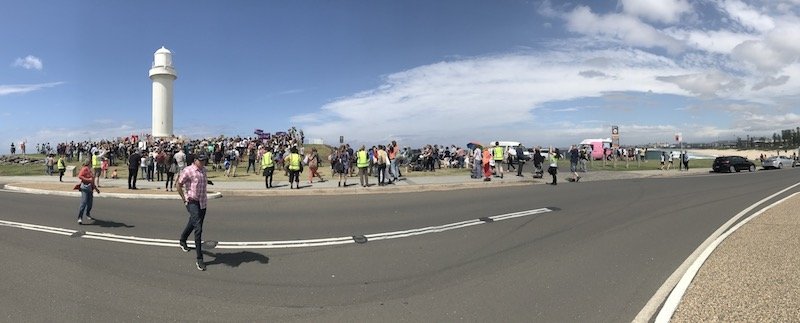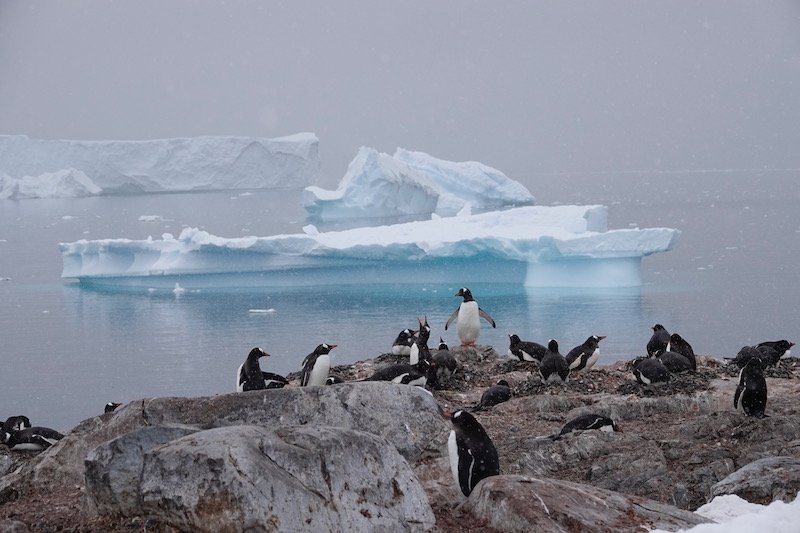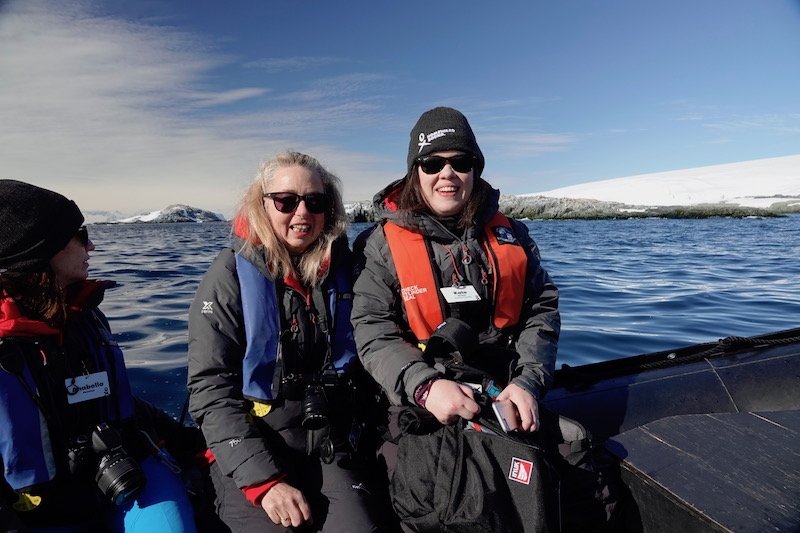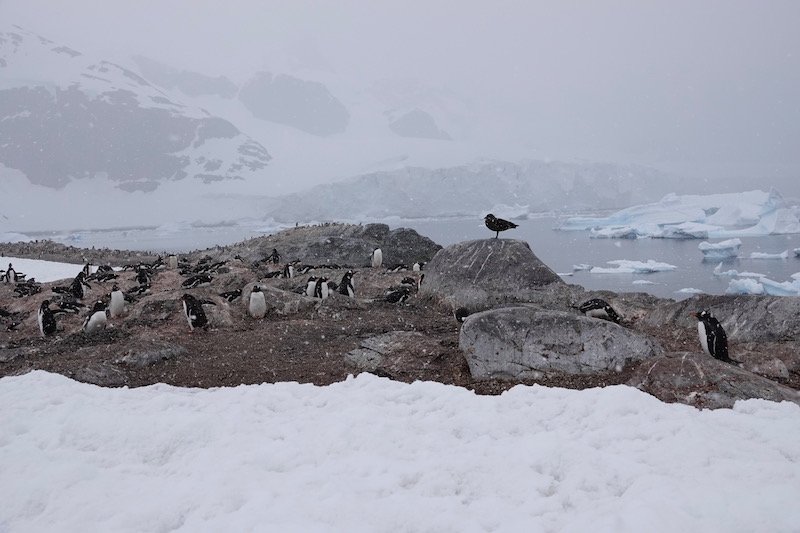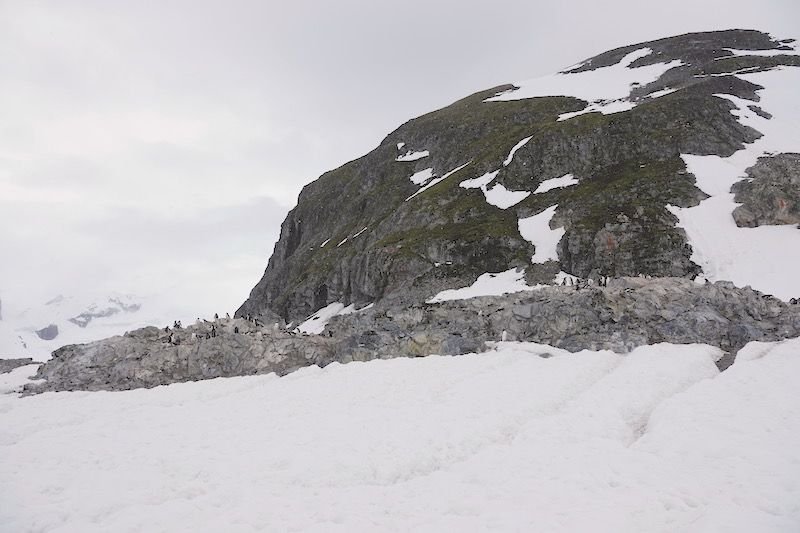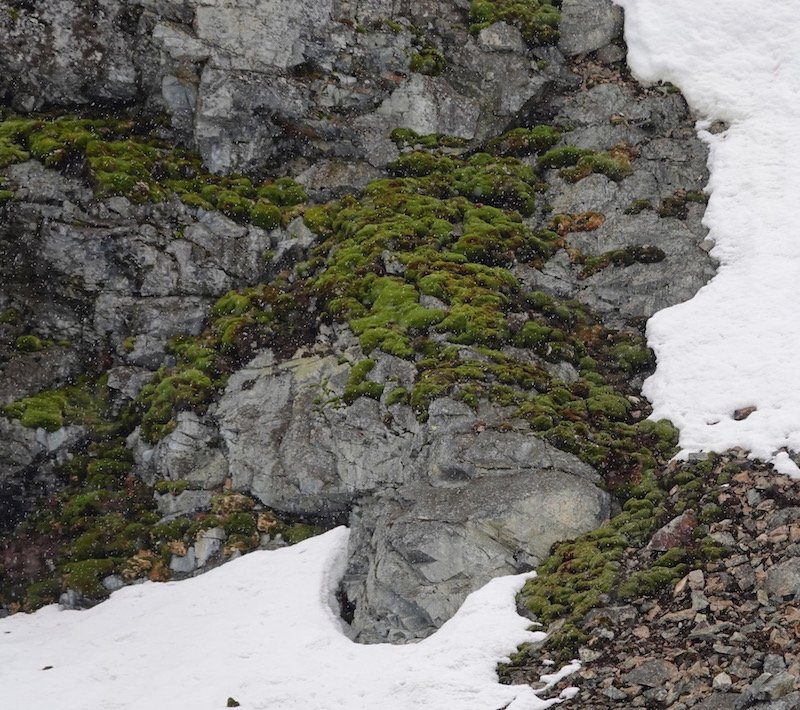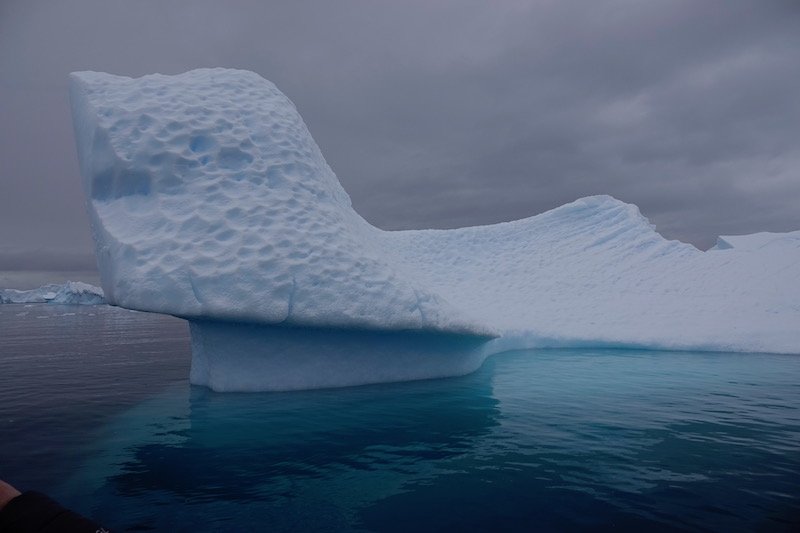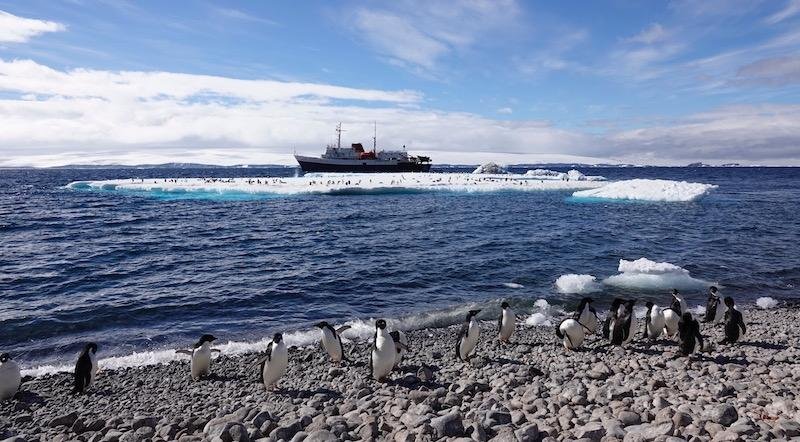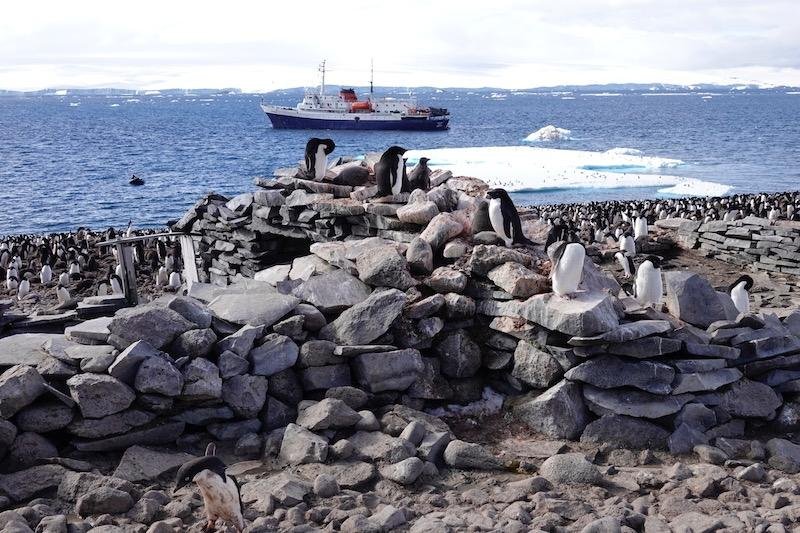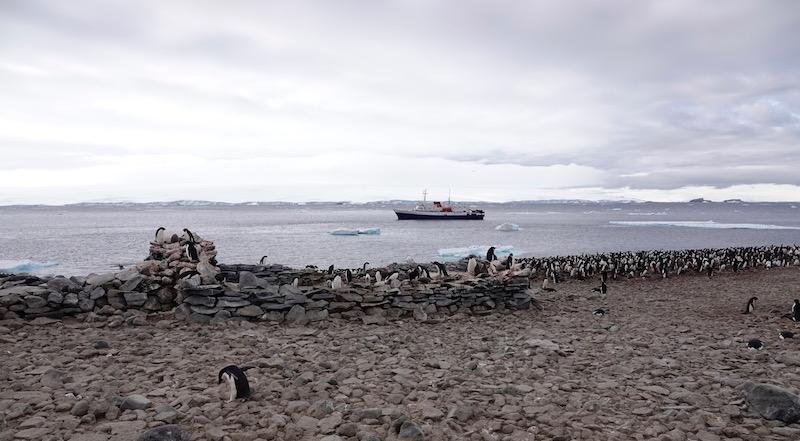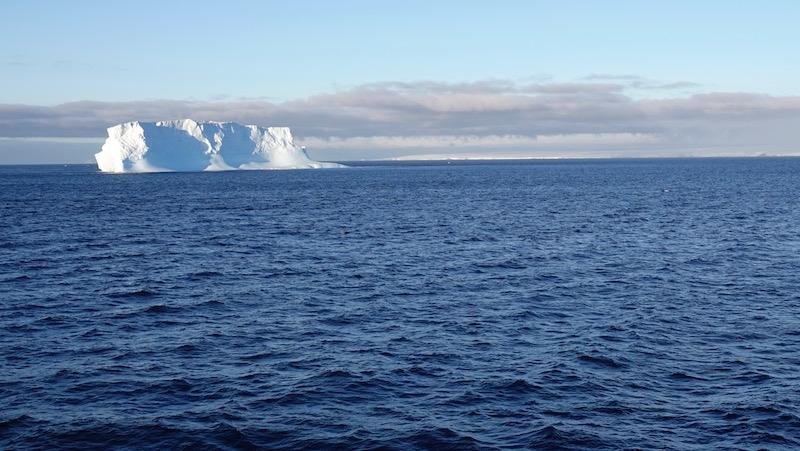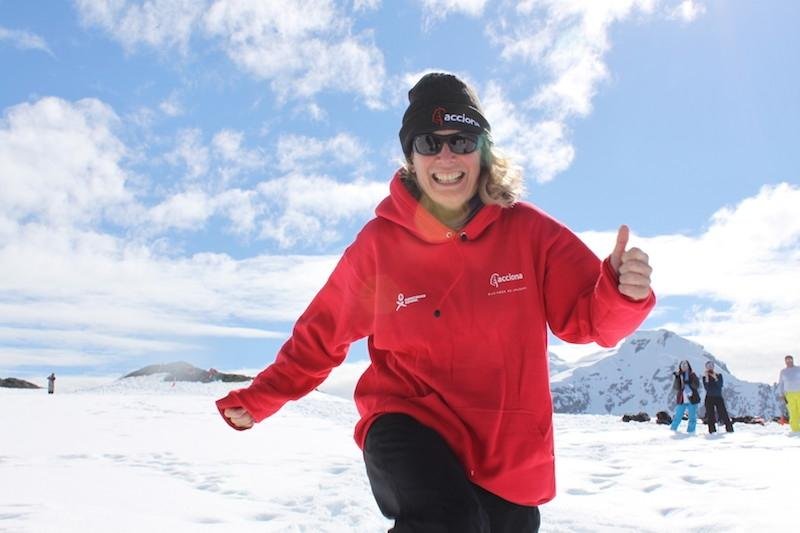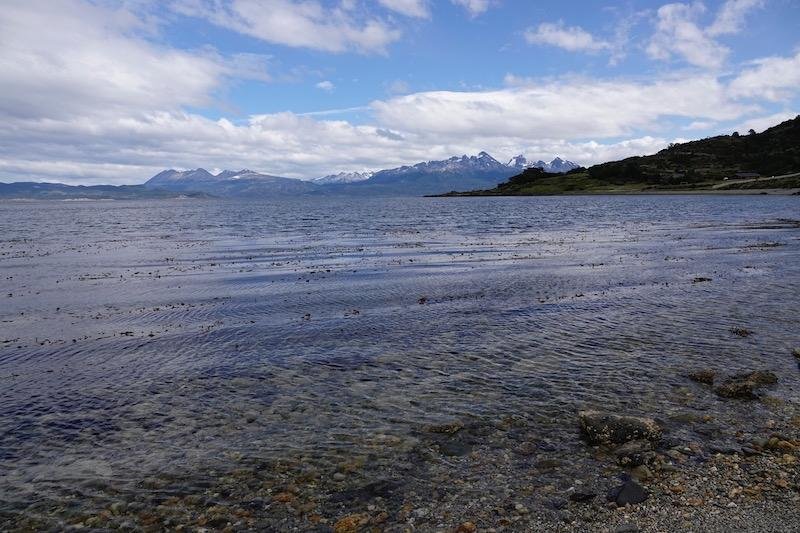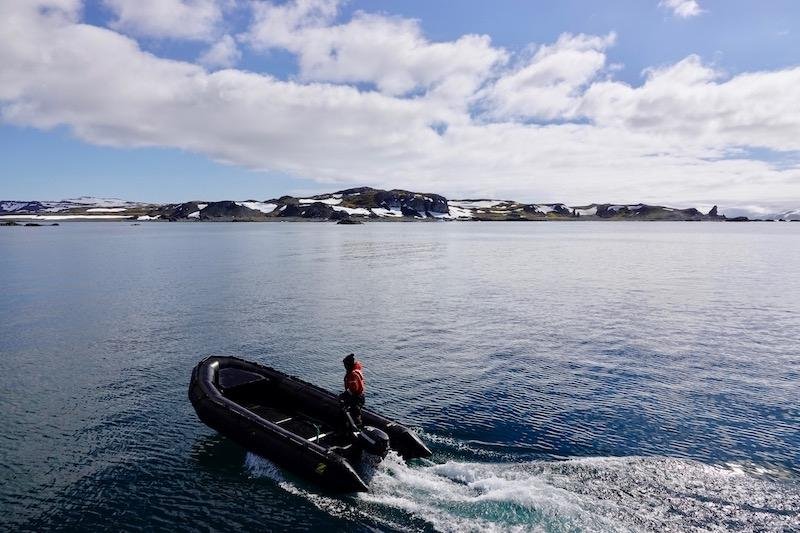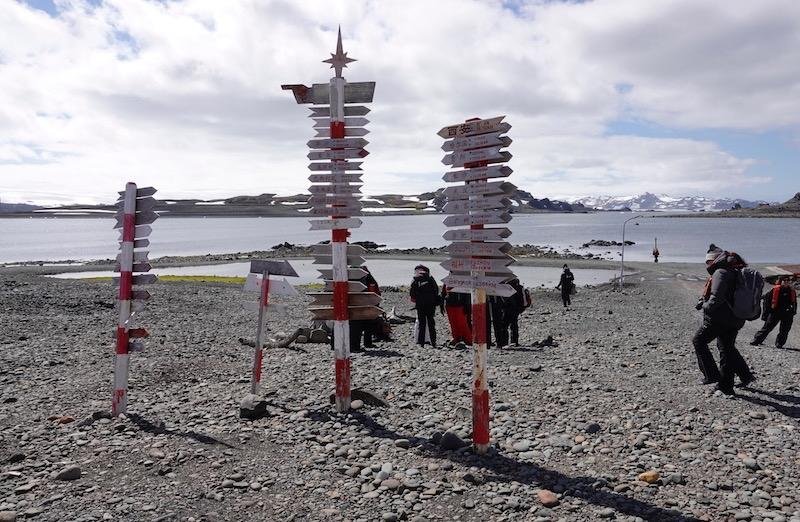Displaying items by tag: leadership
Homeward Bound 5 - Cuverville Island
Each day the participants on the voyage spend 4-5 hours on the leadership program and we attempt to have a landing or a zodiac cruise if landings are not possible. I am leading the on board science program with Dr Katherine Duncan from the University of Strathclyde. Kate was a participant on the second voyage (HB2) back in March. We hadn’t met before this voyage but had talked on whats app and zoom calls whilst preparing the program along with the science faculty founders, Dr Justine Shaw (University of Queensland) and Dr Mary-Anne Lea (University of Tasmania). Kate is a wealth of knowledge about the HB program, the ship and what we need to bring with us. Luckily, both she and Dr Sophie Adams (our wellbeing guru and also a HB2 alumna) brought real coffee, an important component for wellbeing on the ship as elsewhere!
Having only met on the 28thDecember, Kate and I are now sharing a cabin, running a science theme together, enjoying our new-found friendship and planning future science grant applications. We also get to be on one of the first zodiacs ashore in order to supervise the landings and are often last back as we round up the stragglers who just want an extra minute ashore and, that last photograph or video.
The next landing is on Cuverville Island (7thJan) where we find Gentoo penguins nesting and skuas patrolling.
Cuverville Island is very snowy and the chicks were tiny, but at one end it has the most amazing wall of moss, a whole cliff face, green and grey against the white-grey sky. I would love to visit again and take moss samples for dating, to see how old these moss forests are.
We watched penguins rolling eggs or feeding chicks as well as well as mating. Presumably many of these Gentoo penguins have also had aborted attempts at rearing their first clutch of chicks this season.
I take the opportunity to segue from penguin sex to moss sex to the amusement of the nearby participants and Fern Hames (Arthur Rylah Institute)our on-board Sci-Comms facilitator.
On the way back to the ship we have a spectacular iceberg cruise, full of amazing blue, turquoise and white shapes against the grey of the sea.
Homeward Bound 3 - Paulet Island
After Great Wall Station we get back on the ship and head off through the Antarctic Sound on the Eastern side of the peninsula. Lots of spectacular tabular icebergs and humpback whales breaching, showing off their tails, and flipper slapping make for a glorious evening’s sailing.
Paulet Island is our next landing spot (4thJan). This island is home to a massive Adelie penguin rookery (100,000 breeding pairs) as well as skuas, kelp gulls, Antarctic sheathbills and cormorants.
The Adelie’s have fluffy brown chicks and so the challenge was to walk along the beach keeping enough distance from the penguins and other nesting birds to reduce our impact. While the younger Adelie penguins were quite curious about us, the nesting birds are understandably wary of visitors especially with so many predatory skuas on the hunt for food. Paulet island also has the remains of a hut built last century by shipwrecked sailors from the Nordenskiöld ship the Antarctic. Today the hut walls are high-rise nesting sites for Adelie penguins.
There is also a massive lake in the middle of the island which is green with algal blooms from all the penguin guano. Even in the cold, the smell from such a large colony is pretty overwhelming.
Despite there being so many Adelie penguins on Paulet, this species is one of the losers from climate change. Adelie penguins are reliant on sea ice and cooler water to provide food and so are losing out to the more generalist feeders, chinstrap and Gentoo penguins, which are expanding southwards especially on the western side of the Antarctic peninsula.
The Ushuaia crew are Argentinian and Chilean. Our female voyage leader Monica Schillat, is an historian and has many tales to tell of her years of working on Antarctic vessels. Kata, one of the expedition guides, has just finished her PhD researching orcas which means we have lots of expertise to draw on. Leandro and Juan like plants too so I am in good company. Because the weather is so calm we get to take many iceberg cruises and see lots of humpback whales and orcas. One night I am sure I can hear the humpbacks calling and in the zodiac boats we get close enough to smell their fish-oily breath. We often see weddell and crabeater seals hauled out on ice flows or swimming along beaches.
Homeward Bound - A leadership voyage of Discovery
Sharon has just returned from 19 days aboard the MV Ushuaiaas part of the Homeward Bound HB3 voyage. Homeward Bound is a ground-breaking leadership initiative, set against the backdrop of Antarctica, which aims to heighten the influence and impact of women in making decisions that shape our planet.
I was invited to join the Homeward Bound Leadership Faculty for the third voyage (HB3) which departed Ushuaia in Argentina on 31st Dec 2018. My role was to deliver the On-Board Science Stream content with Dr Katherine Duncan (University of Strathclyde). In 2019 we were extremely lucky to have the inspiring and stubbornly optimistic Christiana Figueras join the Leadership Faculty. This is my blog.
Days 1-6
We left on New Year’s Eve 2018, after two days of travelling and then three days of on shore program delivered in Ushuaia. By the time we found our cabins and unpacked, securing all our belongings to ensure they survived the Drake Passage, we were ready for a good rest. So many of us spent a lot of the Drake crossing catching up on sleep.
We arrived in the South Shetland islands on the 3rd Jan 2019.
Our first visit ashore was to King George Island which is home to many Antarctic stations. I have visited this island twice before with colleagues, Dr Angelica Casanova-Katny (University of Temuco) and Professor Gustavo Zuniga (USACH), staying at the Chilean Summer Scientific Station, Escudero. I am excited to see Ardley Island from the ship as we sail by. This Antarctic Specially Protected Area, has some of the best lichens I have ever seen, but I am surprised to see there is very little snow on the island. However, this is good news for Dr Melinda Waterman who will be arriving at Escudero in the next few days. Less snow means it will be easier for her to make the measurements of moss microclimate that we need.
Meanwhile, the HB3 team visit the Chinese Great Wall Station where were saw the museum which shows what life was like for Antarctic expeditioners in the 1980s and walked around the station. While visits to stations by tourist ships are limited, interstation visits for researchers are quite common. In 2015, whilst at Escudero, I was lucky enough to be invited to Sunday afternoon tea at Great Wall Station and we saw the new Science Laboratory and station library.
More unusually, in 2013, Angelica and I attended the Metallica concert at Carlini Base. Not the sort of thing you expect to be invited to whilst researching mosses in Antarctica! King George Island was the furthest south I had been on this side of Antarctica so all the other locations were new experiences for me.

